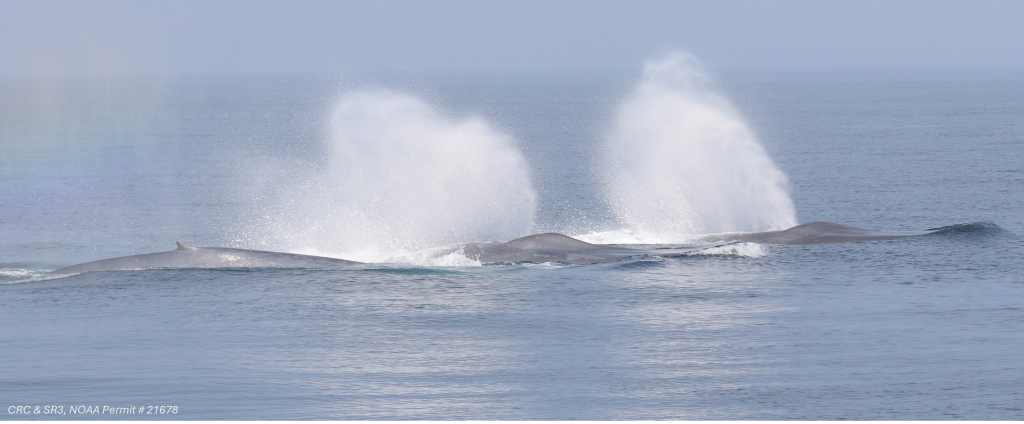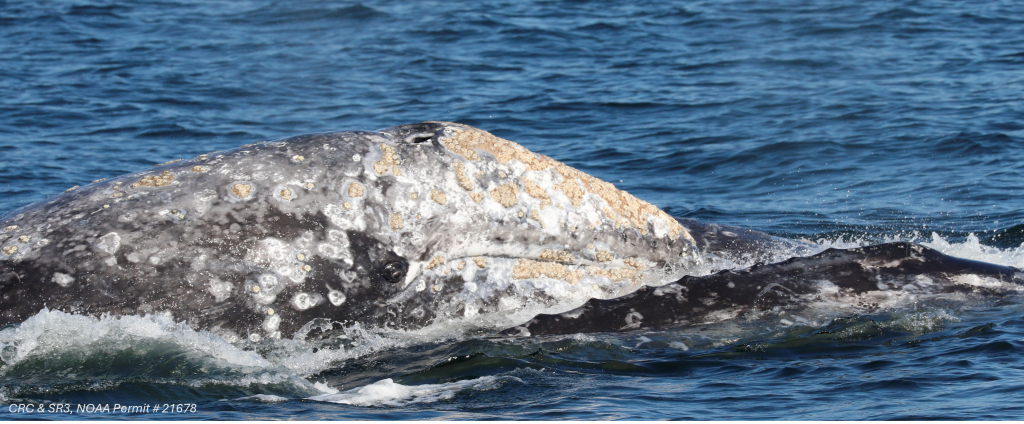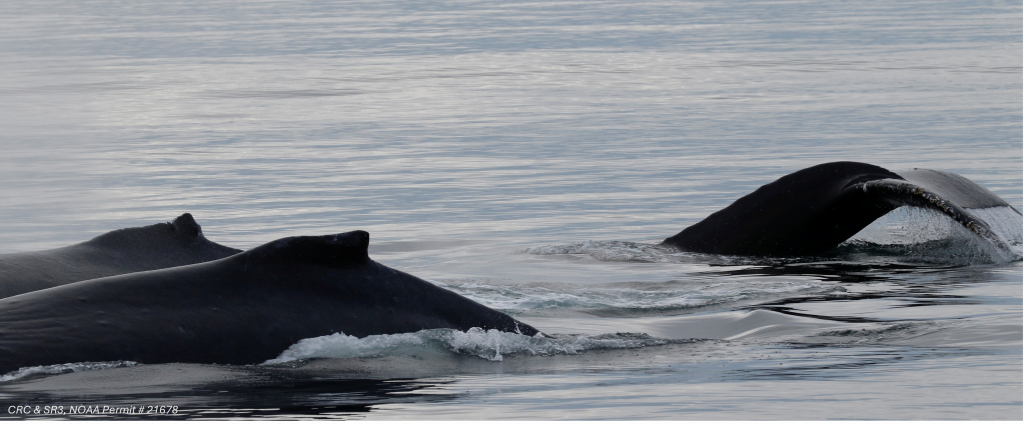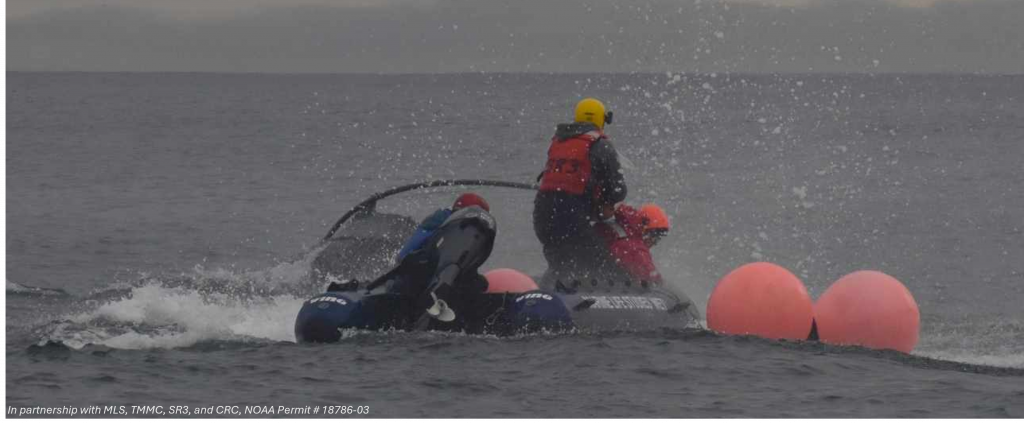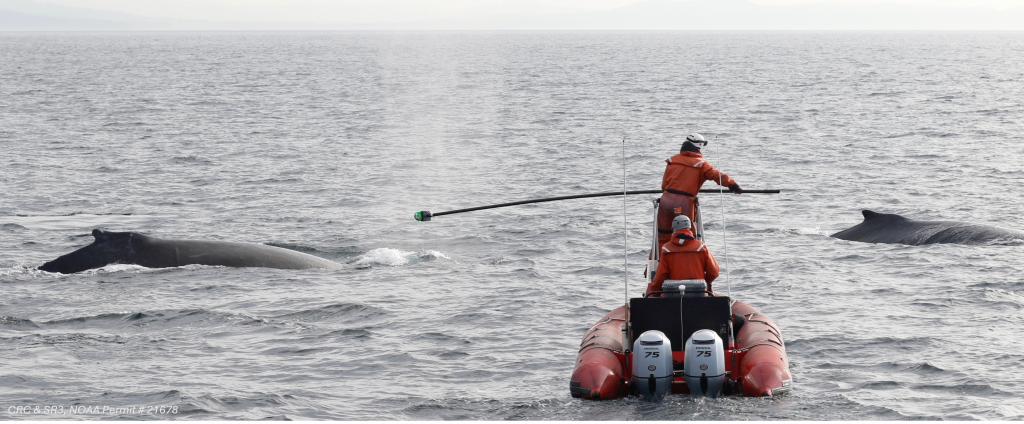Whale entanglement remains one of the greatest threats to large whales along the US West Coast.
Cascadia Research Collective has been at the forefront of whale conservation and research since the 1980’s, responding to our first entangled whale in 1998. Entanglement responses are necessary to understand the who, what, where, when, and why of the whale entanglement issue; but, without data on population abundance, distribution, habitat use, and stranding response we cannot understand risk, survival, long-term effects, or success/fail of mitigation measures. This is why Cascadia’s long-term studies are so valuable for future entanglement prevention and conservation.
Read on to learn more about how Cascadia’s long-term population studies, fieldwork, stranding response, and entanglement response program all play important roles in solving the entanglement issue.
1. Whale Entanglement Response Program
Cascadia is an active member of NOAA’s West Coast Large Whale Entanglement Response Network. The Network is a coast-wide collaboration of federal, state, tribal, academic, and nonprofit partners working together to respond to entangled whales and to prevent future entanglements. Given that Cascadia’s research spans the entire US West Coast, from the Salish Sea in Washington to Southern California, we have responded to entanglement reports along the majority of the coastline in collaboration with several network partners across Washington, Oregon, and California, including, but not limited to:
- NOAA Fisheries
- Washington Department of Fish and Wildlife
- The Makah Tribe
- SeaDoc Society
- SR3
- The Whale Museum
- Oregon Department of Fish and Wildlife
- Oregon State University
- California Department of Fish and Wildlife
- Cal Poly Humboldt
- The Marine Mammal Center
- Marine Life Studies
- Moss Landing Marine Laboratories, San Jose State University
- Hopkins Field Station, Stanford University
- Monterey Bay National Marine Sanctuary
- Santa Barbara Response Team
The West Coast Region is part of the larger National and Global Network to reduce large whale entanglements through safe rescue operations, data collection, and prevention strategies. All response activities (including documentation, approaching the whale, attaching a telemetry tag, and removing gear) are conducted by trained and authorized responders under NOAA permit #24359, following international and national safety standards that prohibit entering the water and prioritize the safety of both the whale and the crew. (click on the image to learn more)
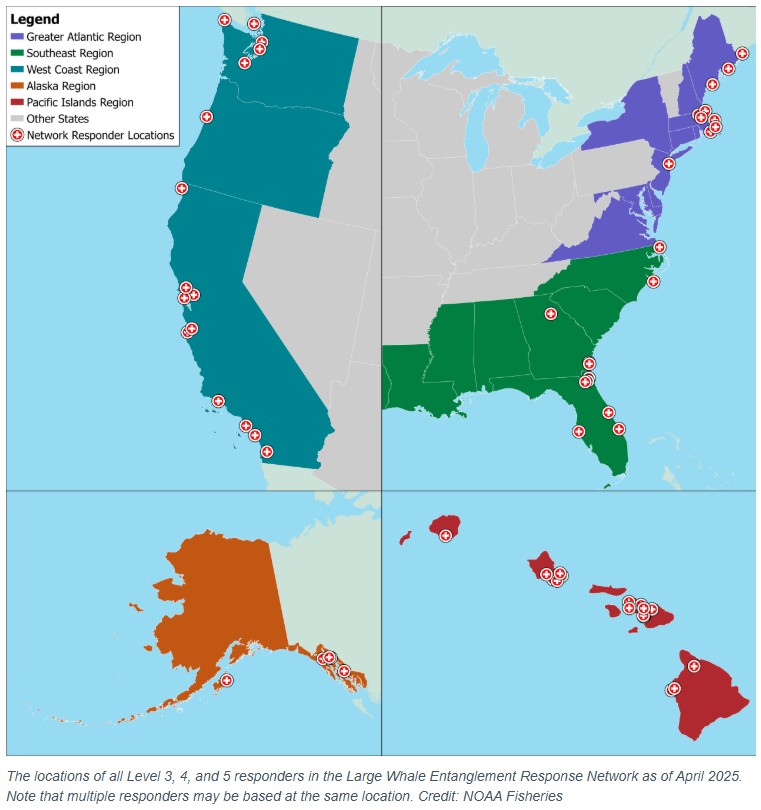
Longstanding Collaboration, Expanding Action
Despite our expansive network, the West Coast presents enormous challenges. It is a vast and dynamic coastline with significant gaps between trained teams with advanced responders. These challenges have led to limited data supporting long-term mitigation, and a disconnection between rescue efforts and research.
To conquer these challenges, we launched a new initiative in 2024, The Partnership for West Coast Whale Entanglement Action.
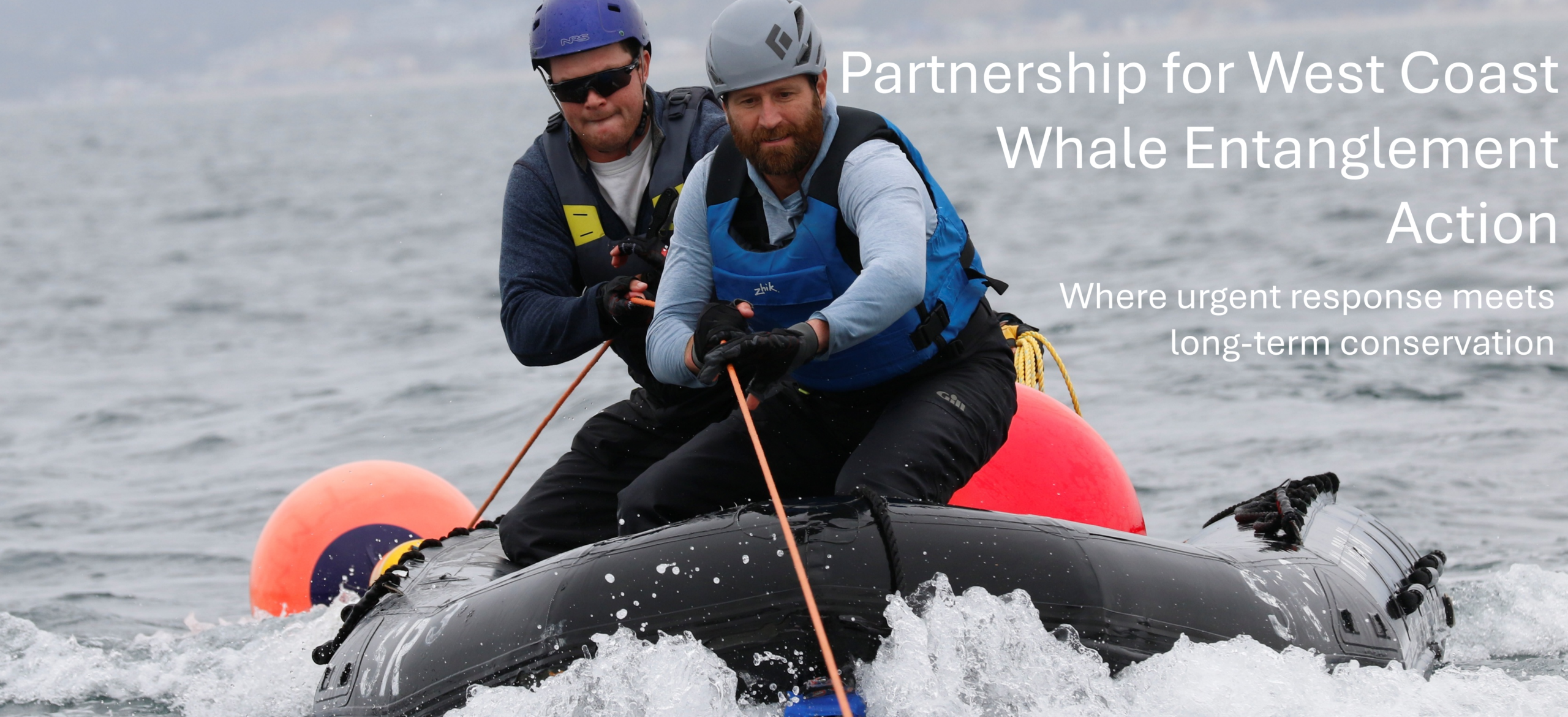
A New Chapter in Whale Protection
The Partnership aims to strengthen a coordinated, coast-wide response to entanglements and bolster research that informs prevention. Our goal is to generate high-quality data that supports science-based policy decisions, safeguards whale populations, and ensures the coexistence of fisheries and whales.
By working closely with federal and state agencies, fishery managers, tribes, response teams, and research institutions, the Partnership seeks to reduce risk and enhance recovery by improving entanglement response methods – being proactive, not just reactive.
Learn about all the accomplishments during the program’s first year here
2. Fieldwork
Cascadia staff members, students, and interns collect data from a variety of platforms, ranging from shore-based stations to cargo ships transiting the US West Coast. The majority of our survey efforts occur from small rigid hull inflatable vessels that we can easily trailer from port to port, allowing us to target good weather windows along a relatively challenging coastline.
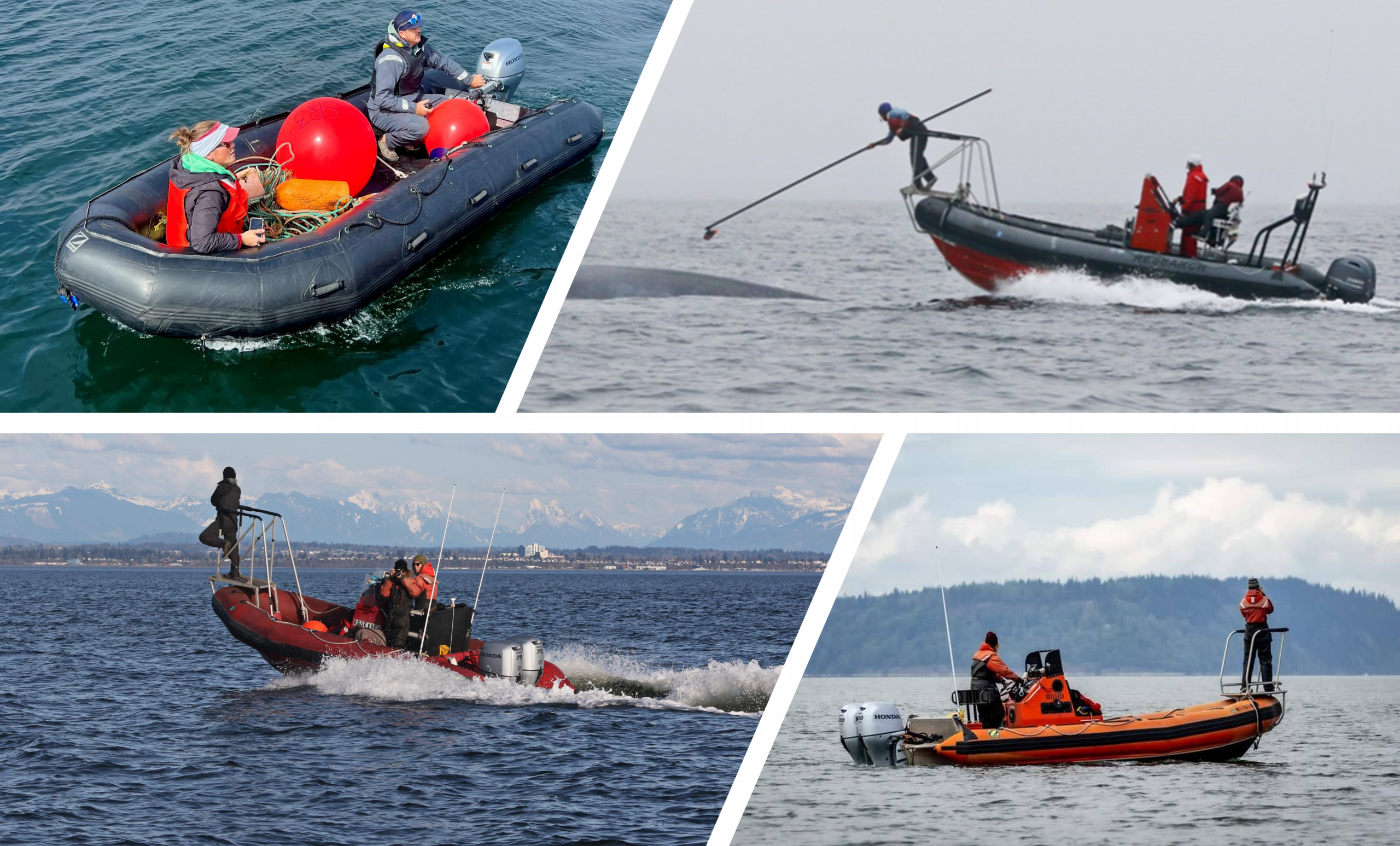
Cascadia’s current fleet for research and response activities
During research surveys, we collect data that includes abundance counts, photo-ID, habitat type, prey data, genetic sampling, and movement data using biologgers. However, it is not uncommon for us to discover an entangled whale during our research efforts. Our staff is trained to easily transition from research to response – either addressing the entanglement in that moment, documenting the entangling gear, or attaching a tracking device to the entangling gear so that we can respond the next day with a larger team and proper tools & equipment.
Learn more about specific projects like the SOCAL-Behavioral Response Study, the Delphinid-Behavioral Response Study, the North Puget Sound Gray Whale Feeding Study, and blue whale ship strikes research.
3. Long-term Population Studies
Since 1986, Cascadia Research has conducted long-term research on blue, humpback, and gray whales along the West Coast of the United States. Research efforts for blue and humpback whales also extends to the waters off Central America. During our research efforts, we collect photo-ID images as well as images to determine health and injuries. Cascadia maintains catalogs for all three species serving as the basis for the abundance estimates and trends for these species off the US West Coast. Cascadia also relies on contributions from a number of opportunistic sources (including citizen science) and collaborators to provide sighting information along with the photo-IDs.
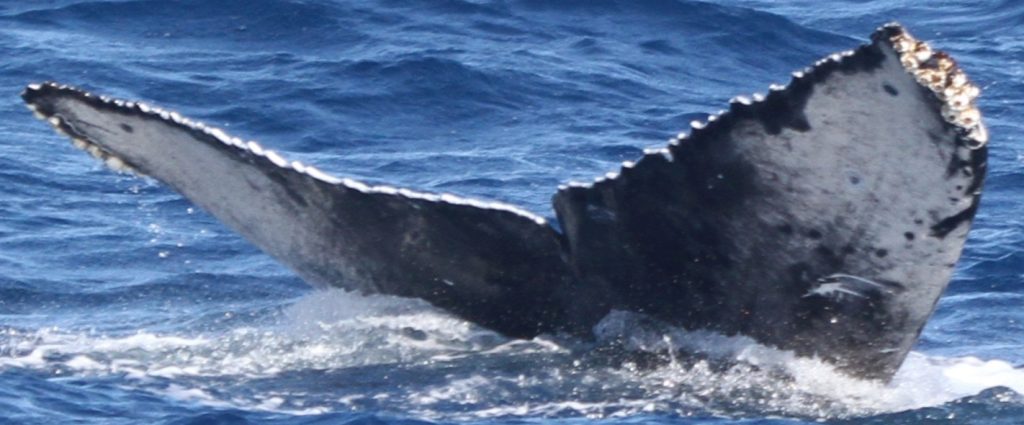
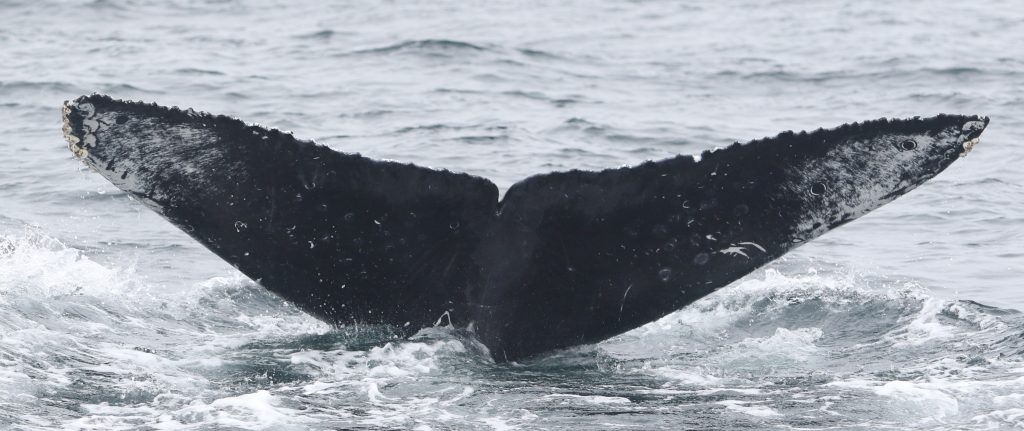
Images of humpback whale CRC-16389 during its calf year (left) and three years later in 2018 (right)
Being able to identify entangled individuals allows us to better understand entanglement durations, survival rates, short and long-term effects, wound/injury healing, and demographics most at risk. You can learn more about our long-term blue and humpback whale population studies, as well as our work on gray whales including the Pacific Coast Feeding Group (PCFG) and the Sounders in Northern Puget Sound.
4. Stranding Response
Cascadia first began responding to marine mammal strandings in the late 1970s, and have been a member of the West Coast Marine Mammal Stranding Network for several years. Cascadia staff and volunteers currently respond to an average of 100 stranded marine mammals annually, which includes large whales anywhere in Washington State. The data collected during stranding responses are essential in establishing baselines and detecting deviations from normal population trends. When possible, we conduct a detailed external and internal examination to look for evidence of human interaction (vessel strike, entanglement, gunshot, etc.), and to identify the potential cause(s) of death.
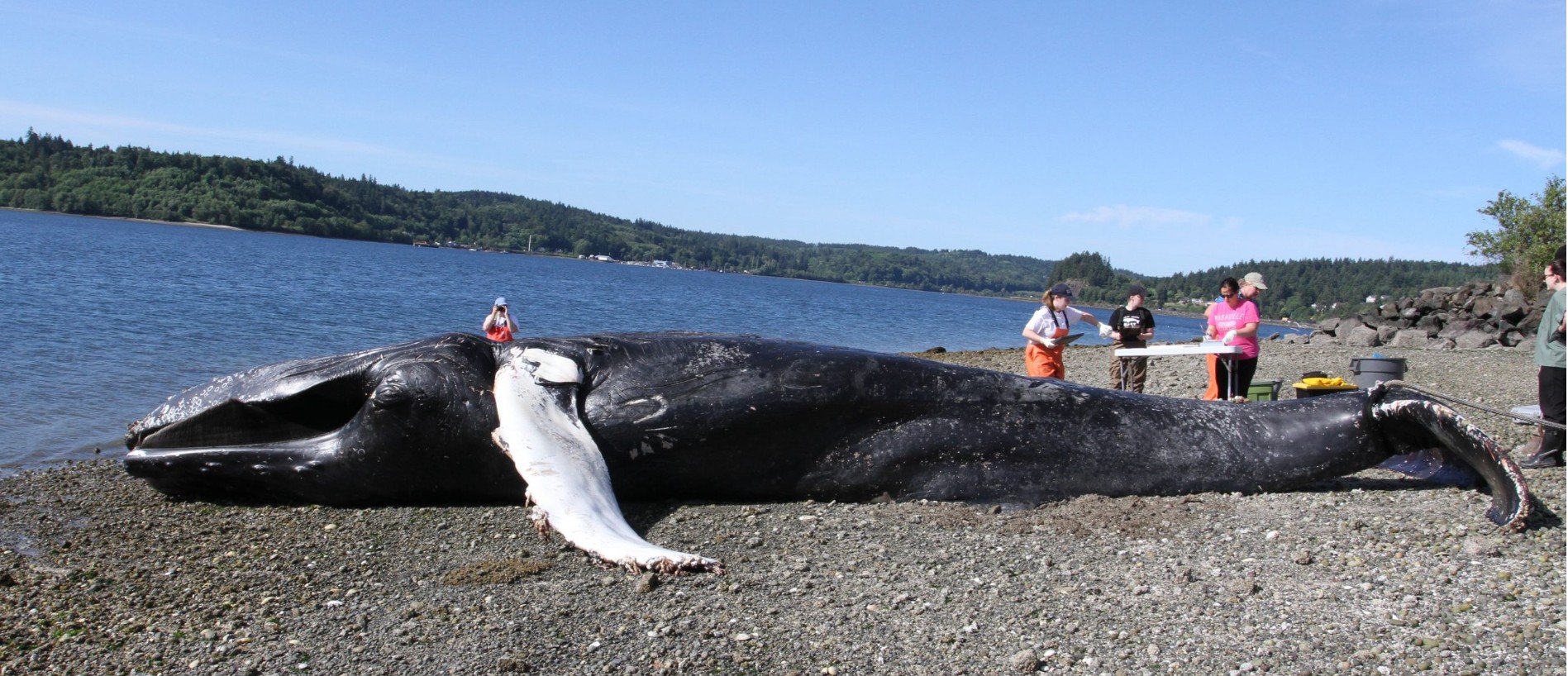
Biologists from Cascadia Research and WDFW prepare to examine a dead humpback whale. NMFS Permit 18786
During stranding responses, we document signs of old, recent, and current entanglements on stranded whales. By documenting scarring, injuries, and fresh wounds on all visible parts of the body, we determine if the whale had survived a past entanglement(s) not related to its death, as well as determining the role a recent or current entanglement may have played in large whale mortality. Using photo-Id, we can also link known entanglement cases to stranded whales. Learn more about our Stranding Response program and how you can report a dead, injured, or stranded marine mammal in Washington State.
On the US West Coast Report an entangled whale to 877-767-9425 or hail the US Coast Guard on Channel 16
Click here to learn how to safety stand-by and report entangled whales throughout North America
Images taken under and research & response activities conducted under NOAA permit #’s 16111, 18786, 21678, 24359, and 28850.
